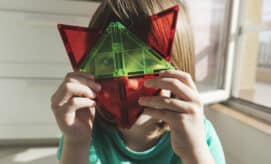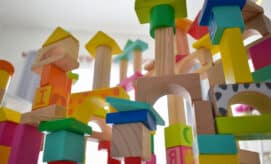Concordia University Portland shares three basic math skills that children should learn in preschool to build a foundation of understanding. When children understand these concepts early, elementary teachers are able to focus on the application of the concepts and children are better prepared to learn more advanced skills.
-
Number sense: Number sense is the first step in math awareness. It describes the basics of learning about numbers, including counting forwards and backwards in order to understand the relationship between numbers.
-
Learning numbers through representation or pictures: From a young age, children can build relationships between numbers and represented items. Numbers can be represented with objects, pictures, or family members as a way to make the concept more real and less abstract to young learners.
-
Adding and subtracting: Adding and subtracting are more advanced skills that should be taught after the introduction of number sense and representation. The basics of addition and subtraction can be introduced through normal daily interactions between children, such as sharing and counting snacks, blocks, or crayons.
Circle Time Math
Dr. Deborah Stipek of Stanford University notes that Circle Time offers a great opportunity to introduce and reinforce math concepts. She recommends the following concepts and Circle Time activities:
Numbers and Operations
Children can work on counting, adding, and subtracting during circle time. Counting by category deepens children’s number sense. Ask, for example, how many boys, how many girls, and how many children in total are in the classroom.
Patterns
Preschoolers enjoy working with rhythmic and visual patterns, and these are a great way to introduce math skills. During circle time, have children follow your lead in clapping out different rhythmic patterns and then talk about the pattern– “three loud claps, one soft clap, one stomp.” Find patterns in children’s clothing and around the room, such as stripes, checkers, and dots.
Measuring
Comparing various sizes, such as the height or length of arms and legs can help children develop a basic understanding of measurement.
Shape and Space
Encourage children to discuss the shapes they see, by asking them to find items that have triangles, squares, circles and then comparing each shape to notice the differences. Many children’s books introduce shape and space math concepts and can be enjoyed with children during circle time.






